Transparent Reference vs Reference XL interlinks
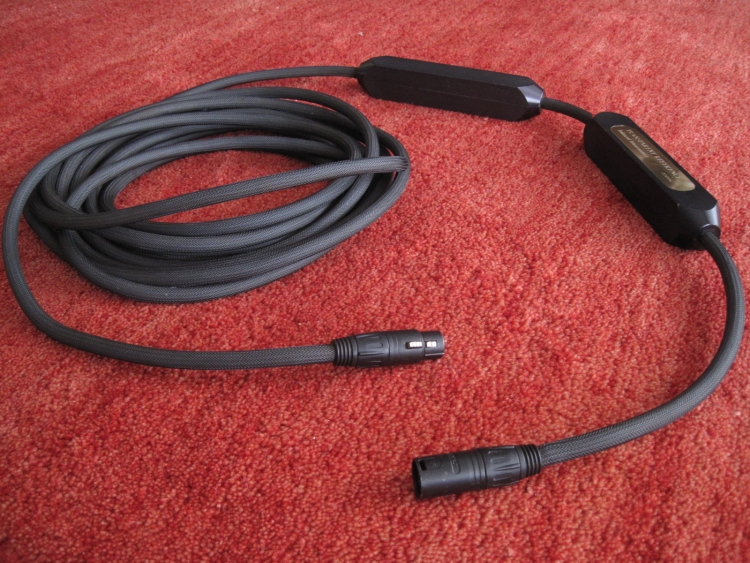
How does Transparent XL differ from non-XL in sound?
XL Technology – official statement from website FAQ
XL Technology was a computer model developed in 1996 by Jack Sumner and Transparent’s design team. For the first time in, XL Technology was able to specify the exact electrical parameters needed for an audio cable to achieve ideal musical performance, given its geometry, length and application. This technology was the culmination of many years of research, testing and critical listening. Reference XL was also the first product to incorporate our advances in the use of non-metallic materials to reduce electromagnetic interference and resonance.
The first products to benefit from XL Technology were Reference XL Interconnects and Reference XL Speaker Cables. Later, in 1997, Transparent applied XL Technology to its entire line of networked audio cables. Because of the high standards imposed by XL Technology, Transparent cables of any length were able to perform with uniform sonic characteristics.
Cable Length – official statement from website FAQ
Will it degrade the sound if I use a long speaker cable or interconnect in my system? Not at all! We compensate for cable length with our networks so a long cable will sound the same as a short cable and vice versa. We design a different network for every length of Transparent cable so you can set up your components where you want them and not have to worry about a loss in performance.
If you have a passive volume control for a preamplifier, or an extremely high output impedance preamplifier or amplifier, you should consult with Transparent for advice regarding cable length and type.
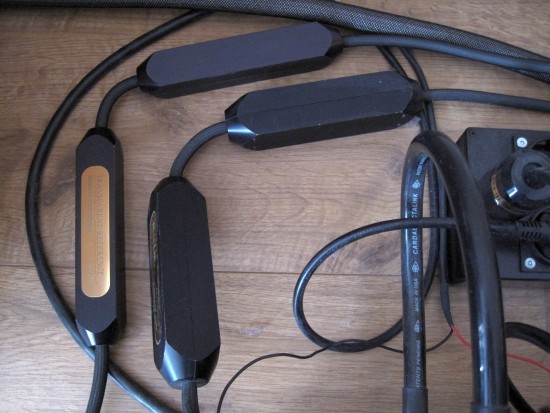
Above: left and upper: Reference XL, right and lower: Reference.
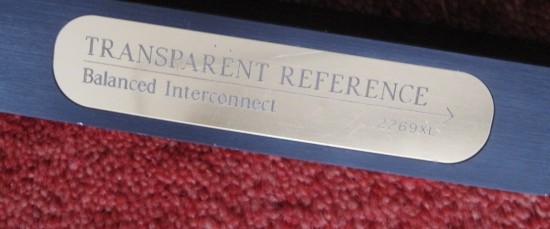
Above: Reference XL can be recognized by the XL addition after the serial number
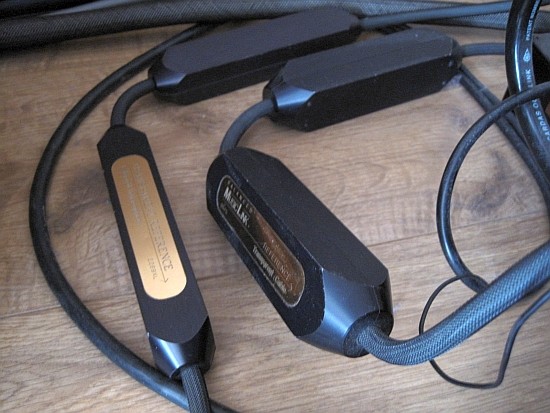
Above: If you look closely you can see that the newer XL cables (left) have thinner network boxes.
Sound
Leaving the company blurb and going back to my own experiences, judging from the size difference of the network boxes (XL are smaller), it would seem to follow that this is possible because of tighter tolerances using smaller parts. Whether or not that’s true will remain a secret, but there’s no denying that there are differences in sound. Another matter is that Transparent claims that they can tune the cable to its actual length and that because of this, length has no influence on the sound. Well, I beg to differ. The XL cable on test is 7,5 meters long, and even if Transparent did tune the cable to this particular length, it sounds like it didn’t work out so well on the treble.
Reference versus Reference XL
I have been using a Reference XLR cable for years between preamp and power amps with huge success. No other cable sounds so voluptuous, so big, so lush and yet so well-balanced. Transparent cables, in general, can throw a huge soundstage but are never in your face, instead relaxed and natural. The MM range deviates from this but that’s for another story and you can read all about that here. The Reference is not a universally applicable cable: sometimes it doesn’t work, but in my setup, it works like a charm.
Substituting my own Reference for the Reference XL it is clear that this is still a Transparent cable: big presentation, a lush sound, big bass… wait a minute… the bass is even bigger now! Yup, after swapping back and forth a few more times it is evident. The Reference XL has more solid bass, with better transient speed. It is at once articulate and full of body. That’s 1-0 for the XL cable. In comparison, the Reference’ bass is less well defined, a little mellow.
Moving up the frequency scale, the same is true for the midrange: a little more articulate and a little bit more forward too. But in no way does it start to resemble the “in your face” MM sound. This is still classic Transparent sound, with all lushness and soundstage width present, just a little more “live”.
Arriving at the treble matters are more severe. Whether or not it is due to the cable’s long 7,5-meter length I cannot say, but there’s a serious treble roll-off and to be honest, I can only explain it as a side effect of the extra capacitance as an effect of the cable’s length. No other Transparent cable I have heard yet sounds this dark.
In spite of its darker signature, the Reference XL is still an excellent cable. What’s more: for its more upbeat and articulate bass and more lively midrange, I’d even choose it over my own Reference cables. Question is: will a shorter version of the Reference XL be the all-out winner?
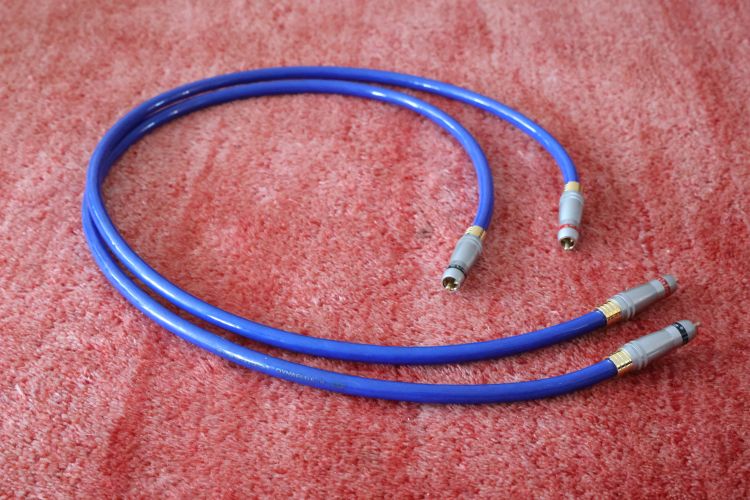

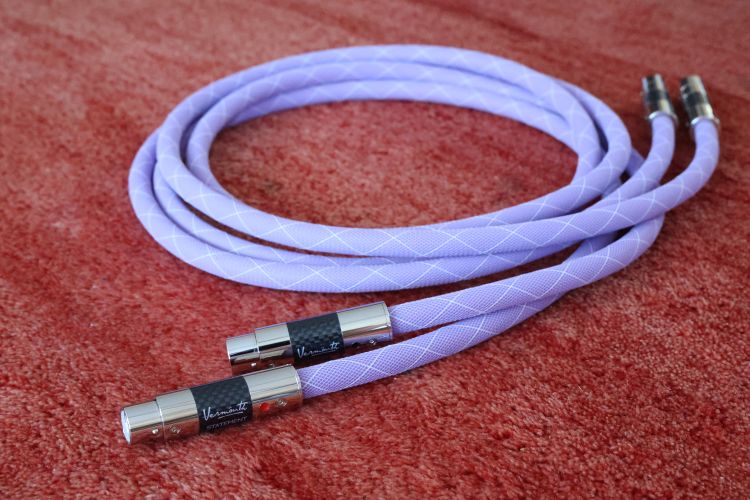
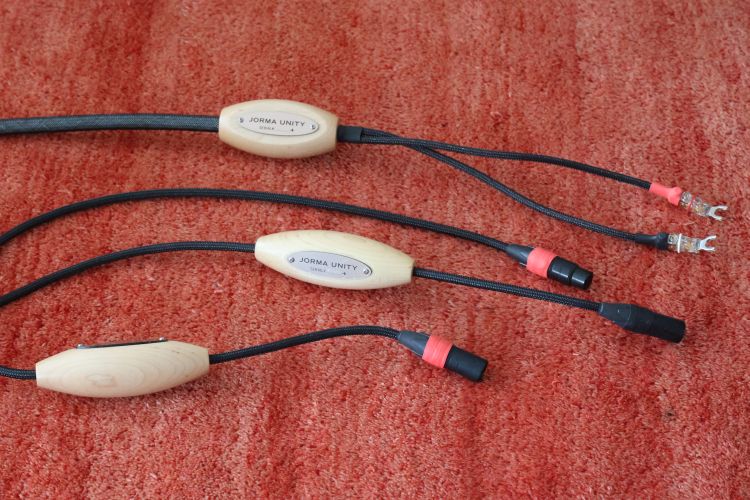
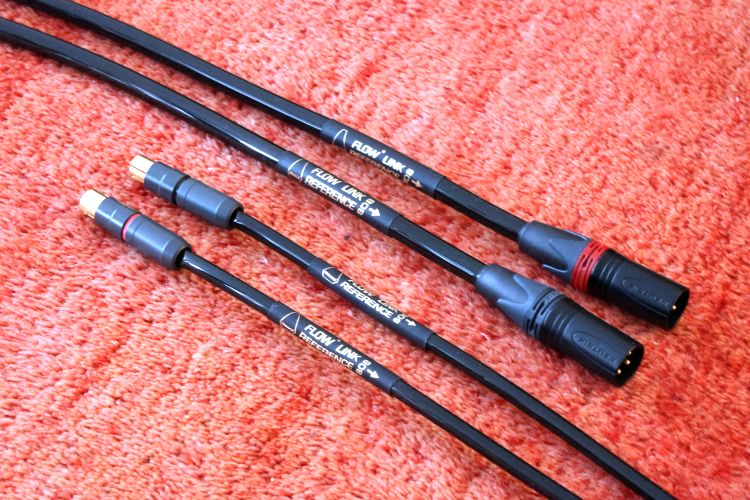
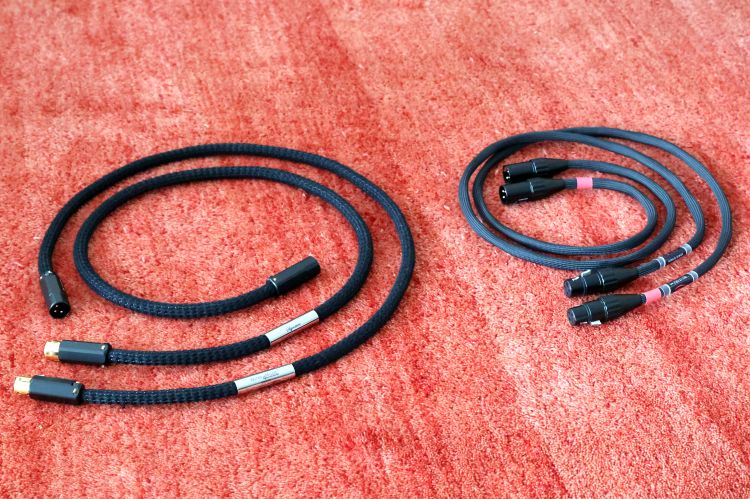
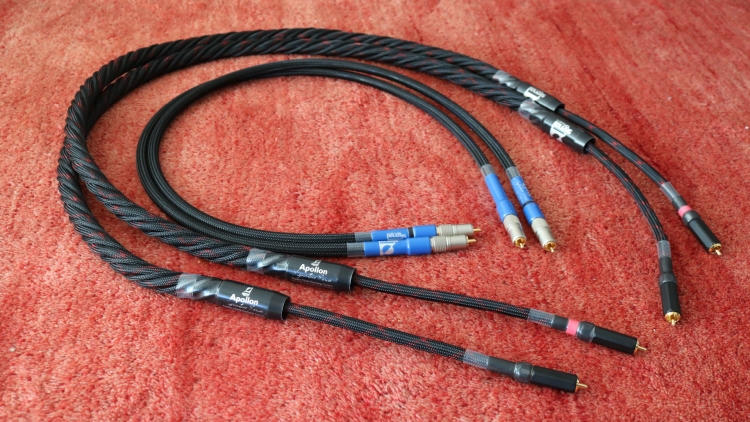
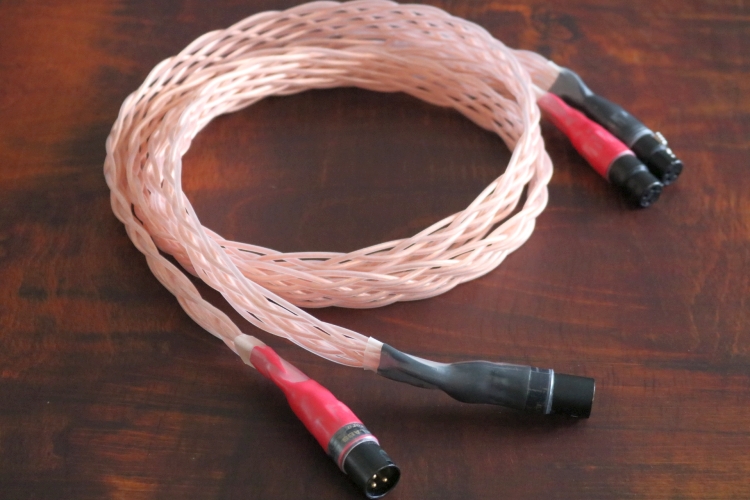
Hello Christian!
Sorry for my English, i’m French! I’ve got a Transparent cable powerlink reference xl, a 2 meters long power cord used with a Ayon cdt transport. The cable is an old line from the end of 90’s or beginning of 2000’s.,with silver sleeve. I would like to
improve the sound, not in a too analytical way.. i like lush sounds but with tight bass. Could you give advices, for plugs, i think iego 8085 gold or oyaide p-079, for ac plugs and oyaide c-079 or Furutech FI 28 for iec plugs. Would it be a good thing, to change the plugs, and only keep the rest of the power cord, in order to get a big step beyond. What i try to mean, does this cable, is a good basis to improve, or not really, because it’s an old PC and perhaps pretty outdated…
In any case, i would to thank you, for all your usefull reviews.
Best regards
Alain Jimenez
Hi Alain, obtaining a lush sound but with a tight bass is pretty difficult. The transport should really be connected with a neutral powercord because making it more lush that way is possible but inevitably this goes at the expense of PRAT and bass tightness. The Transparent is an ok cable, but it sounds nothing like the Transparent house sound. In other words, it does not sound as smooth and creamy as the Reference range of interlinks. You can find cables that sound smoother, such as Harmonic Technology and Furutech. The bass with these cables will also be less tight though. Why not keep the cable and try other connectors? You can suffice with only changing the IEC side first to see if you like the results. Normally Transparent power cables have Wattgate connectors. These are ok but quite “rough” and you can certainly improve refinement with better connectors. Of your mentioned connector options Oyaide P-079 sounds most relaxed, fluid and smooth and it also has least attack in the bass. Furutech FI28 is similarly smooth and relaxed but sounds more colourful and powerful overall, with bigger bass. IeGO is most powerful, solid and tightest, but also drier en darker and less fluid than the others. Good luck!
Hi Christiaan,
I have a similar question to that of Alain’s. My Transparent power cords are Reference XL and Opus level. Do you think these cords would also benefit from better terminals. If so, what would be your recommendation? Many Thanks
Hi Marcus, if I am not mistaken then these Transparent power cables use Wattgate connectors. While good, these can be improved upon in terms of resolution and refinement. Also depending on what you are after, you could either smooth, or tighten the sound.
If you want more tightness, articulation and transient attack, while retaining refinement, then you could try Oyaide 004.
If you want a smoother, more fluid sound, at the expense of some articulation and attack, but retaining refinement, then you could try Furutech FI28/38.
If you want the maximum in sonority and dynamics and don’t mind giving up some resolution and refinement, then you could try gold plated IeGO.
Hi Christiaan,
Nice blog, and helpfull information!
Reading about the ‘house sound’ of transparent cables (which sounds fine to me), I wonder if it could be a good match with my Jadis tube amplifiers? I have a JPL pre amp with JA30 power monoblocks. Will it work out….or not a good match? Many thks, Rolf
Well, the JA30’s can sound pretty warm and relaxed, even with KT90’s. So, with the old Transparent Reference XL, you’d be combining smooth sounding cables with smooth sounding components which is fine if smoothness is the thing you want most. Transparent Ultra XL is much more neutral than the Reference but still very fluid and probably a better match. The current MM2 series is tighter and likely a better match but like with the old series, I’d suggest to skip the entry level cables and start with Ultra. A friend with a Jadis setup found the best match so far to be the AudioQuest Water interlink. That is not a smooth sounding cable but it has a full tonality nonetheless, and impressive dynamics and I also like it a lot, especially with tube amps.
Dear Christiaan, thks for your quick answer! Yes I understand the issue of 2x warm sounds. Though in general I like it a bit warmer, than too clinical and harsh music. Maybe good to inform that I’m using ribbon band speakers of Aurum Cantus. They are a good answer to the warmer tubes, and achieve together a more balanced sound.
I know the quality of audioquest; but that will be difficult for me, because I’ll end up with multiple cable brands in my system. My strategy was to stick to one brand. I can get some 2nd hand Transparent cables and then have two interlinks and speaker cables of one brand (a Super and Ultra/reference mix). Another way to go, is to stick to John van Gent, I’ve allready one interlink. So I could buy another interlink + speaker cables.
Difficult choices 🙂
What would you advise?
It’s highly personal but lately I’m no longer fond of the “filtered” effect that Transparent cables have even if they sound nicely fluid and I prefer more direct and pure sounding cables. I’ve not tested JVG cables in my own system yet but I have a feeling that they will sound purer than Transparents and so if these are the only two options for you, and you like the JVG sound, then I would suggest to go with that brand. Ultimately, though, you’re best off just trying them in your system first. Who knows, you might totally fall in love with the Transparent sound, as I did years ago.
I can highly recommend the Transparent Reference XL Balanced interconnect cable in a Shooter length than Testes above. But it‘s about synergy too… I had the Reference xl interconnect for several years between my Einstein Tube preamp and my Pass Monoblocks with really good results (source is Krell KPS 28c cd player), as recommended by Christiaan in his article AND because of the quite „heavy“ boxes the cable has. But a few weeks ago, for curiosity reasons I simply changed positions with the Stealth Indra and put the Transparent between CD-player and Preamp….and *BAAMMM* it almost blew me away. It was and still is STUNNING !!! The Transparent in conjunction with the neutral and crystal clear Indra and Stealth speakercables is (for me) the perfect symmetry in this order between the components… Sincerely Michael from Germany.